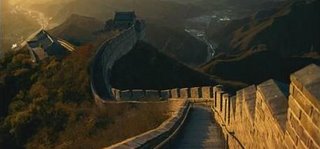 Welcome to the New Year, everyone. Still alive? How’s the head?
Welcome to the New Year, everyone. Still alive? How’s the head?Well, skipping over the killings, executions and so on, the world’s journos consider 2006 their worst year ever as they actually began to get killed going into trouble zones, whereas before they could stay at a safe distance and invent portions of the stories.
The Pope, predictably but no less correctly, bemoaned the assault on the family by modern culture, meaning the culture of sex, drugs, indiscriminate clubbing and shopping that so many parents are delighted their children are developing a taste for.
After New Year Debt. The flurry of gift shopping near the end of the year leads some down the path of least resistance and into the land of credit card debt. The average U.S. household has $10,000 in non-mortgage debt, and the holiday spend-a-thon no doubt puts pressure on consumers to buy more and boost their personal deficits ever higher.
The Consumer Credit Counselling Service offers five tips to consumers who find themselves having bought more than they had planned:
# Know how much you owe: Add up all your credit card and other bills to get a realistic picture.
# Create a spending plan: Decide beforehand what needs to be paid, then put in place a plan for your income.
# Pay off credit card debt: Stop making new charges and pay down what you already owe.
# Build a savings cushion: The goal is to have enough to cover your expenses for three to six months.
# Develop a strategy for a financial future: Monitor your finances on a regular basis. Open a retirement fund and contribute to it regularly.
Can’t see the point of this advice. Those who are careful and frugal will remain so and those with no money and big eyes will continue to load everything onto the cards with no thought of tomorrow.
The one piece of good news is that scientists seem to have developed a non-BSE cow. That’s a good start to 2007 – I’m sure the cows will be delighted by the news.




